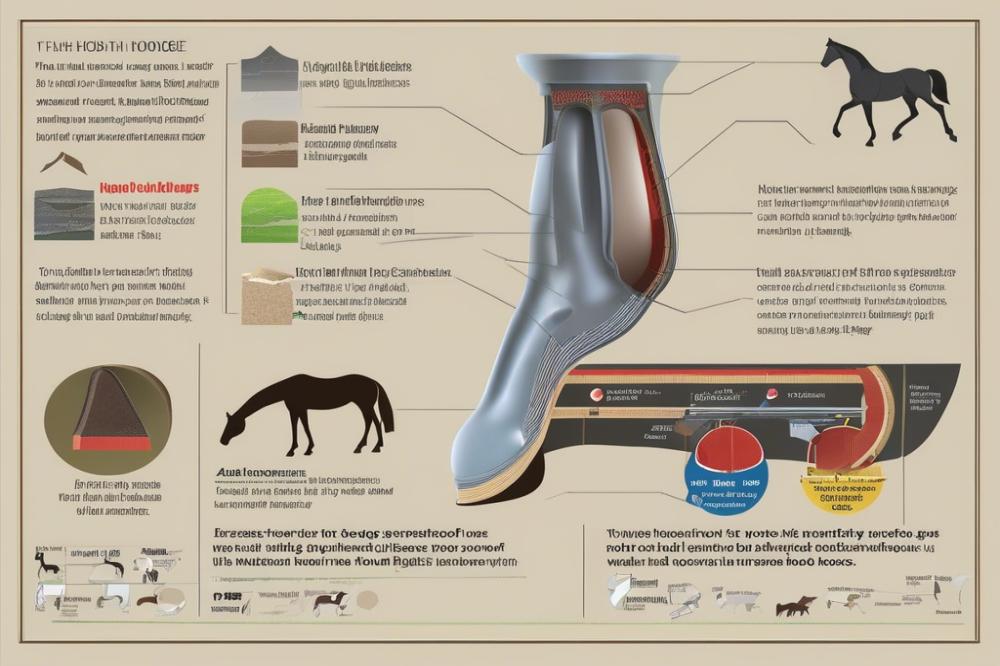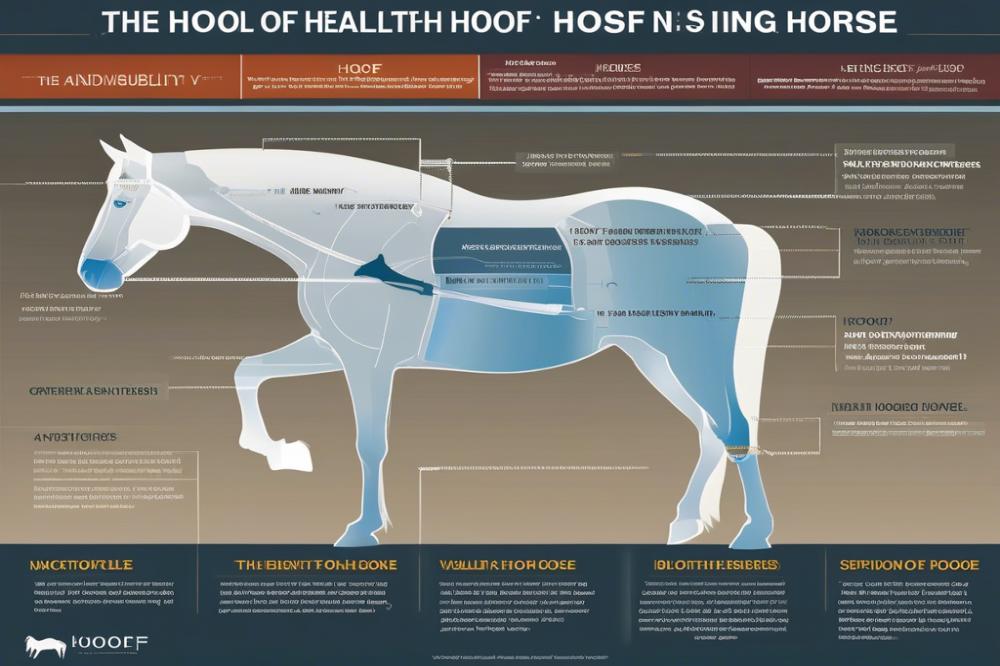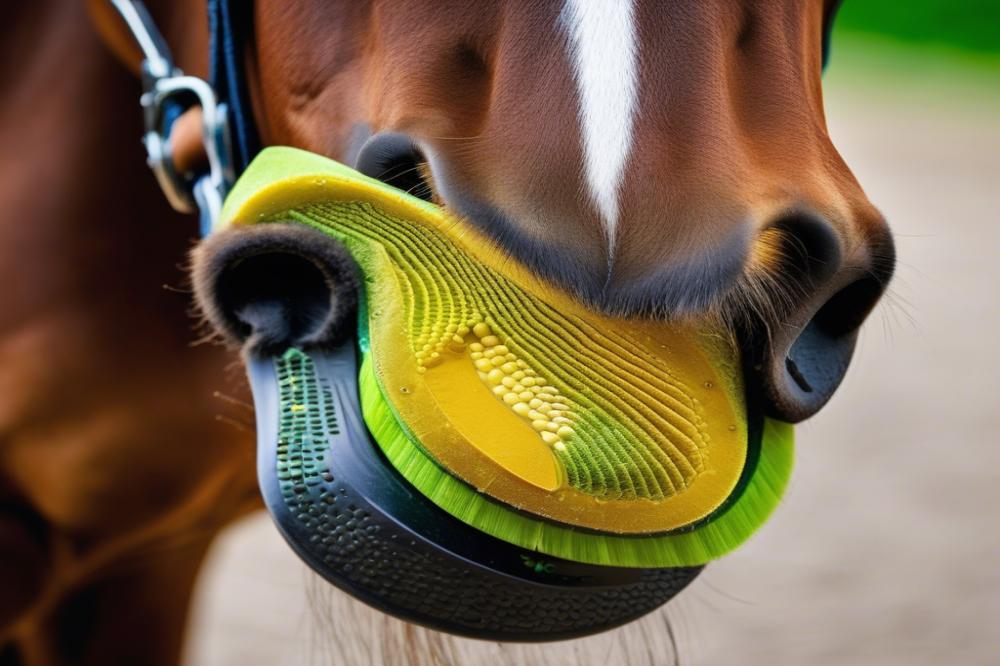Introduction
The delicate balance of a horse’s anatomy often hinges on the intricate well-being of its hooves. Every step a horse takes is a testament to its overall condition, and this is where hoof health plays a crucial role. Many people underestimate the complex mechanics behind these seemingly simple structures. Observing a horse gliding effortlessly across a pasture can be mesmerizing, yet what lies beneath the surface is a world of anatomical precision.
Without doubt, the hooves are more than mere protective coverings. They are finely tuned instruments that support weight, absorb shock, and propel the animal forward. In fact, even minor issues with hoof structure can lead to compensatory behaviors that can affect overall movement. When hooves are unhealthy, they can send ripples through the entire musculoskeletal system, jeopardizing the fluidity of horse mobility. Indeed, problems can arise in the legs, back, and joints, transforming the noble gait into a limp.
Every equestrian knows that the foundation of a horse is paramount. Much like a building relies on solid groundwork, a horse’s strength and stamina depend significantly on the integrity of its hooves. Regular inspections and diligent care become essential practices for those aiming to maintain an equine athlete’s peak performance. Moreover, a slight crack or a misplaced shoe might seem trivial, but the repercussions can be anything but.
Throughout history, the importance of hoof care has echoed in both rural legends and modern veterinary science. Anecdotes of horses saved from debilitating lameness often center around timely interventions and proper management. With the right knowledge and practices, equestrians can unlock the potential for enhanced performance and longevity in their horses. Taking proactive measures and focusing on this aspect are indispensable for anyone who shares a bond with these magnificent creatures.
hoof health and horse mobility

The connection between hoof well-being and equine mobility is profound. A horse’s hooves serve as the foundation for its entire body. Just like a house crumbles without a sturdy base, a horse struggles with movement when its hooves are in distress. Well-cared-for hooves can mean the difference between a graceful trot and a painful limp. When hooves lack proper maintenance, issues arise that not only affect movement but the overall quality of life for the equine.
Common Hoof Health Issues and Their Effects on Movement
Numerous hoof problems can hinder a horse’s agility. Thrush, a bacterial infection of the frog, often causes discomfort. You might notice your horse start to shuffle or hesitate when walking on uneven ground. Then there’s laminitis, an inflammation that can leave a horse not only in pain but also unwilling to move freely. Even something as benign as improper shoeing can lead to lameness or abnormal gaits. Imagine a dancer trying to perform in ill-fitting shoes—that’s what it feels like for a horse with poor hoof condition. These issues can result in not just physical impairments but psychological ones too. Horses may develop reluctance to move, reflecting a fear of pain.
Role of Hoof Anatomy in Supporting Mobility
Understanding hoof anatomy is crucial for grasping its role in movement. Each hoof consists of several parts, including the outer wall, sole, frog, and digital cushion. The outer wall bears most of the weight, much like the walls of a building. It must be strong and resilient to prevent cracks and splits. The frog, often likened to a shock absorber, plays a vital role in cushioning the horse during movement. Just as springs in a car suspension system handle bumps, the frog helps mitigate the impact as the horse moves. Within the hoof lies a complex network of blood vessels and nerves that communicate vital information about pressure and balance. If any part of this intricate structure is compromised, mobility is at risk.
In essence, a horse’s ability to perform at its best hinges on the health of its hooves. Just as a musician needs their instrument to be in tune, horses require well-maintained hooves for optimal performance. Without this basic requirement, one could liken a horse to a car with flat tires—it may have the engine power but lacks the ability to move smoothly. Regular hoof care is indispensable, as it not only enhances mobility but also promotes overall well-being.
Hoof Maintenance Practices

Routine hoof trimming and maintenance are vital for maintaining a horse’s overall well-being. Think of a horse’s hooves as the foundation of a house; without a solid base, everything else may crumble. An unkempt hoof can lead to pain and mobility issues. Regular trimming prevents overgrowth, ensuring the hooves remain balanced and the horse can move comfortably. Inconsistent care can result in hoof deformities or ailments. Scheduling consistent trimming sessions is essential for long-term health.
Best Practices for Hoof Care and Upkeep
Providing regular care involves more than just the farrier’s visit. Daily checks can make a world of difference. Inspecting hooves for cracks, stones, or any signs of thrush or other infections is a must. A good horse owner knows that keeping the hooves clean is half the battle. After a ride, wash the hooves, removing any debris that may have gathered during exercise. Applying a hoof conditioner might also help in maintaining moisture levels, proving beneficial during drier seasons.
Nutrition plays a pivotal role in hoof care. Ensuring your horse has a balanced diet rich in biotin can aid in the growth of strong, resilient hooves. Some owners like to supplement with vitamins or minerals to further bolster hoof health. Don’t overlook providing a proper environment; muddy pastures can lead to fungal infections. Dry, clean surroundings promote better hoof integrity.
The Role of Farriery in Maintaining Hoof Health
Farriers are the unsung heroes of hoof care. They possess a unique skill set, combining knowledge of anatomy with craftsmanship. An experienced farrier can detect early signs of trouble and suggest corrective measures to prevent further issues. Regular visits from a professional ensure that the horse’s hooves remain well-shaped and functional. A farrier often evaluates the wear patterns on shoes to further customize care.
Communication with the farrier is crucial. Each horse has its own peculiarities; discussing any concerns, behavioral changes, or unusual wear can inform decisions. This dialogue can lead to more tailored care. Remember, a well-fitted shoe is like a tailor-made suit; it enhances performance and comfort. Don’t shy away from asking questions—after all, your horse relies on you to be its advocate in hoof care.
Common Hoof Diseases and Disorders

The world of hoof ailments is vast and complex. Horses, much like us, have their own set of challenges when it comes to maintaining health. Laminitis stands as one of the most dreaded conditions in equine care. Extremely painful, this disorder occurs when the sensitive laminae inside the hoof become inflamed. Imagine walking on nails — that’s just a whisper of what a horse experiences during a flare-up.
Your four-legged friend might display some noticeable discomfort. If a horse is reluctant to move or seems abnormally stiff while walking, something may be amiss. When they avoid putting weight on a hoof, it can be a telltale sign of distress. Soreness might also show up as an unwillingness to turn, an odd, exaggerated gait, or a shift in posture that resembles a game of Twister gone wrong.
Other ailments often lurk in the shadows as well. Thrush, another common hoof infection, typically arises from a dirty environment. This condition often manifests in foul-smelling, black discharge within the frog, the V-shaped structure at the base of the hoof. One whiff and you might regret your lunch choice. Should you notice a horse refusing to allow you to handle their feet, thrush might be to blame, causing sensitivity and irritation.
Moreover, navicular disease can prove to be a significant hindrance to mobility. It involves the deterioration of a small bone located at the back of the foot. This can lead to chronic pain and lameness, making even a light trot feel akin to a grueling marathon. While many might expect a vibrant gallop from these agile animals, chronic pain can have them acting like they’re wading through molasses.
Beyond these major concerns, irregularities in hoof structure can also indicate deeper issues. Cracks, chips, and flaring suggest a lack of proper care or an underlying health problem. Pay attention to the overall shape and condition of each hoof. An ounce of prevention is worth a pound of cure, as the saying goes. Regular inspections can reveal early signs of disease and facilitate timely interventions.
Being vigilant means watching for peculiar behaviors. If the horse is more irritable than usual, it might not be due to a bad day. Monitor for changes in eating habits; horses in pain often lose their zest for grain and hay. Furthermore, subtle shifts in their demeanor or energy levels can provide important clues regarding hoof conditions.
Understanding these common hoof diseases is essential for promoting equine wellness. Armed with knowledge, horse owners and caregivers can better support their majestic companions. After all, a horse’s happiness and mobility often hang in the balance, tethered to the health of their hooves.
Preventive Care for Optimal Hoof Health
Strategies for Preventing Hoof Issues in Horses
Taking proactive measures is crucial for maintaining the well-being of horse hooves. Regular hoof inspections can reveal early signs of problems. Check for cracks, uneven wear, or thrush. These indicators often require immediate attention. Owners should also rely on skilled farriers for routine trimming. Corrective shoeing can make a world of difference for horses with unique needs. Basic care routines include maintaining cleanliness. Dirt and debris can lead to infections if not regularly removed.
In addition, creating a consistent hoof care schedule is essential. Many horse owners find that integrating this as part of their weekly routine can help avoid oversight. Encourage your equine companions to stand on softer ground whenever possible. This can alleviate stress on their hooves, especially in harsh weather. Sprinkling a bit of humor into these sessions can lighten the mood. “Hey, buddy, let’s save those feet from becoming hoofed horrors!”
Importance of Diet and Exercise in hoof maintenance
Nutrition plays a pivotal role. A diet rich in minerals and vitamins supports strong growth and resilience. Biotin, zinc, and amino acids are particularly beneficial. Feeding horses a well-balanced mix of forage, grains, and supplements can yield dividends.
Regular exercise cannot be overlooked. Movement circulates blood and strengthens the connective tissues within hooves. A horse that simply stands still for too long may face issues over time. “Out in the pasture, letting loose is the name of the game,” one could say. Turnout time is as essential as a good shoeing. Think of it like a workout; the more they move, the fitter they become.
Long-term Benefits of Preventive Care for Horse Mobility
Opting for preventive care leads to significant long-term perks. Horses that receive regular hoof care are less likely to develop chronic problems. Observing a horse move freely is like watching poetry in motion; a true joy for any owner. Simplicity often lies in diligence. The right practices can save on costly veterinary bills down the line.
Moreover, maintaining hooves promotes overall health. A healthy horse is often a happy horse, which encourages bonding and emotional well-being. Everything revolves around this synergy. Life with healthier hooves means more time spent enjoying the great outdoors or competing in events. Invest in preventive care today, and your horse will thank you for years to come.
Final Thoughts on Equine Well-being
A healthy foundation is vital for any horse. Neglecting the feet can lead to a cascade of issues that ripple through an animal’s entire being. Every stride tells a story, and discomfort can easily translate into behavioral changes or reduced performance. Understanding the connection between foot condition and overall soundness is fundamental for anyone involved in equine management.
Regular assessments are essential. Observing your horse’s movements can provide early warning signs of trouble. Engaging with a knowledgeable professional ensures that you are tackling any impending problems head-on. Moreover, integrating proper nutrition and exercise into your horse’s routine directly supports strong and resilient feet.
Consider the role of the environment as well. Different terrains and footing can affect a horse’s well-being. Keeping your horse well-manicured will help your equine athlete thrive, no matter where it roams. Adopting best practices in care will not only bolster performance but also promote a happier animal.
Part of responsible ownership means being aware of all aspects of well-being, including vision and aging. Resources such as equine care can provide insights that enhance understanding and promote proactive measures. Additionally, learning about the distinct requirements as horses age will further aid in providing tailored treatment. For a deeper dive, explore hoof maintenance which can guide future decisions.
Ultimately, the journey of horse care is one of partnership and respect. Each horse has its own unique needs; attending to these will foster a stronger bond with your animal. Consider signing up today for our services and elevate your approach to caring for your equine companion. Take that step towards informed ownership and bring out the best in your horse by visiting here. Embrace the opportunity to learn and enhance your horse’s life, one hoof at a time.



